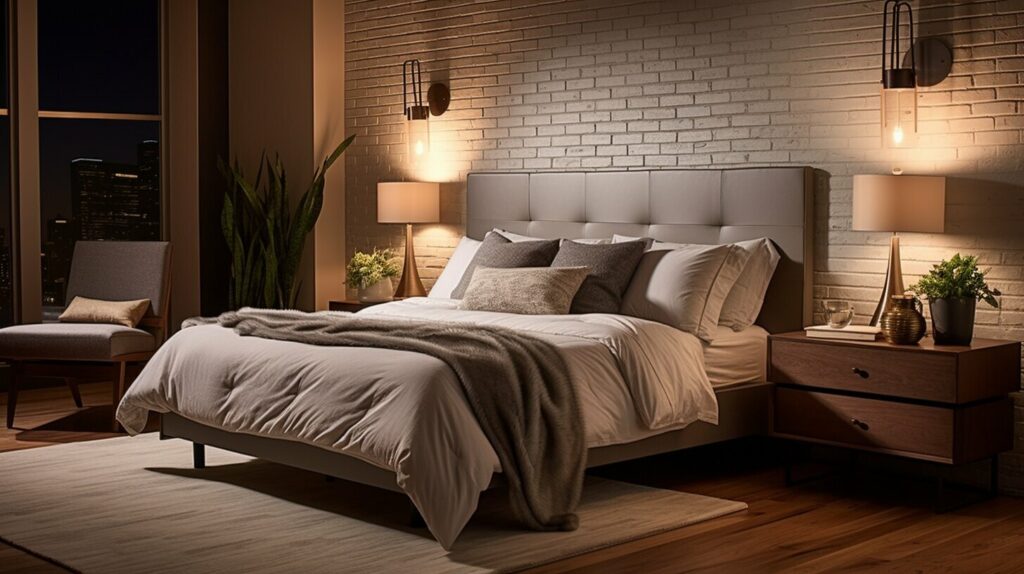Bedroom Lighting
Bedroom lighting can completely transform your space into a peaceful retreat. From ambient glow to task-focused beams, understanding how to layer your lighting is the key to both beauty and function.
Key Takeaways
- Ambient lighting sets the tone with soft, general illumination
- Task lighting provides focus for reading, grooming, and work
- Accent lighting enhances décor and highlights features
- Color temperature and dimmers help control mood and function
- Layering light sources creates a balanced and cozy environment
What Is Bedroom Lighting?
Bedroom lighting refers to the use of various light sources to illuminate and enhance a bedroom’s function and feel. The three primary types are ambient (general lighting), task (specific-purpose lighting), and accent (decorative or highlighting light). Thoughtful bedroom lighting design improves not only visibility but also ambiance, making the room more inviting and restful. In modern homes, the right lighting can even influence your sleep quality and mental wellness. Using a smart lighting system allows you to automate brightness changes throughout the day, simulating natural sunlight. This can regulate your circadian rhythm, helping you wake up refreshed and fall asleep more easily.
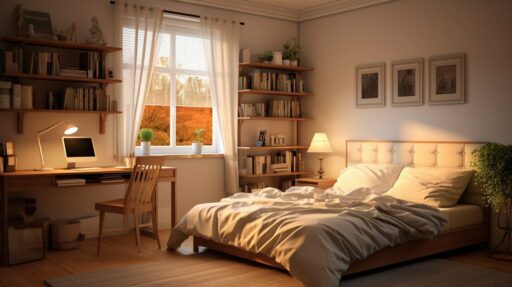
Task Lighting in the Bedroom
Task lighting is critical for specific actions like reading, writing, and self-care. Think desk lamps, sconces, or pendant lights directed at your bedside or vanity. These help you focus without straining your eyes. Unlike ambient lighting, which bathes the room in a soft glow, task lighting provides concentrated illumination right where it’s needed. Adjustable fixtures, such as swing-arm wall sconces or articulating desk lamps, offer precision control and allow you to fine-tune your environment. This is especially beneficial for late-night readers, makeup application, or journaling before bed. Combining functionality and style, task lighting makes everyday bedroom tasks effortless and enjoyable.
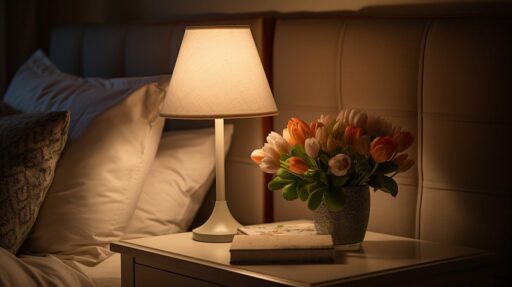
Balancing All Three Layers
The most comfortable and stylish bedrooms layer lighting: ambient to set the tone, task to provide focus, and accent to add personality. Dimmers help blend these layers seamlessly based on the time of day or mood. This concept of layered lighting ensures each part of your room serves its purpose without overwhelming the space. For instance, a bright ceiling fixture might be perfect during the day, while a dimmed wall sconce and pendant over your reading chair offer a relaxing evening ambiance. Using smart bulbs or lighting scenes allows you to switch between modes easily, enhancing convenience and energy efficiency.
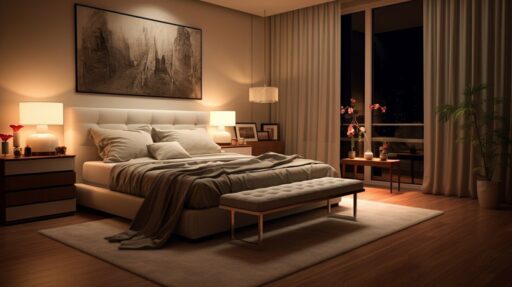
Tips for Bedroom Lighting Design
Choose warmer bulbs (2700K–3000K) for a cozier vibe. Use floor lamps for flexibility. Install sconces or recessed lights to save space and add elegance. Always consider the size and layout of your room when placing fixtures. For example, in a small bedroom, opt for wall-mounted fixtures or hanging pendants to free up bedside table space. Larger rooms can accommodate bigger, bolder pieces like chandeliers or multi-arm floor lamps. Also, think about lighting zones: create pockets of light around the bed, reading nook, and closet. Using dimmable switches and multi-bulb fixtures gives you granular control over mood and brightness throughout the day.
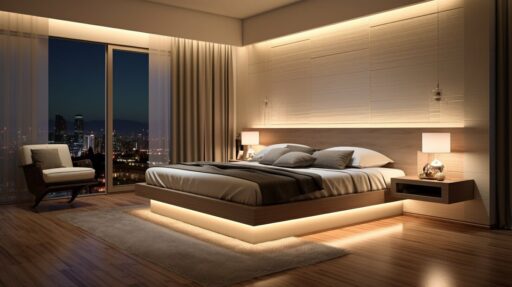
Bedroom lighting isn’t just about bulbs and fixtures—it’s about crafting an experience. When done right, it enhances relaxation, function, and style all at once. A well-lit bedroom supports your daily rituals, promotes better sleep, and showcases your unique design preferences. Whether you prefer a minimalist modern aesthetic or a cozy traditional vibe, thoughtful lighting is the detail that pulls everything together.
FAQ
What is the best type of lighting for a bedroom?
The best bedroom lighting combines ambient, task, and accent lighting. This layering provides flexibility, comfort, and visual appeal. By addressing general visibility, functional tasks, and decorative interest, your lighting design adapts to multiple needs and moods throughout the day.
How bright should bedroom lighting be?
Bedroom lighting should range from 2,000 to 4,000 lumens overall. Use dimmers and warmer bulbs (2700K–3000K) for a relaxing effect. Focus brighter lighting on workspaces, and allow for softer light in sleep or lounge areas for the best balance.
What are the best fixtures for bedroom lighting?
Chandeliers, flush mounts, bedside lamps, sconces, and LED strip lights are all great choices depending on the purpose and layout of your room. Each type offers its own aesthetic and functional value to enhance your space.
Learn more in our guide to choosing bedroom lamps,
space-saving bed frame solutions, and
how lighting impacts your sleep.
Trusted sources:
Sleep Foundation,
WebMD,
Architectural Digest

